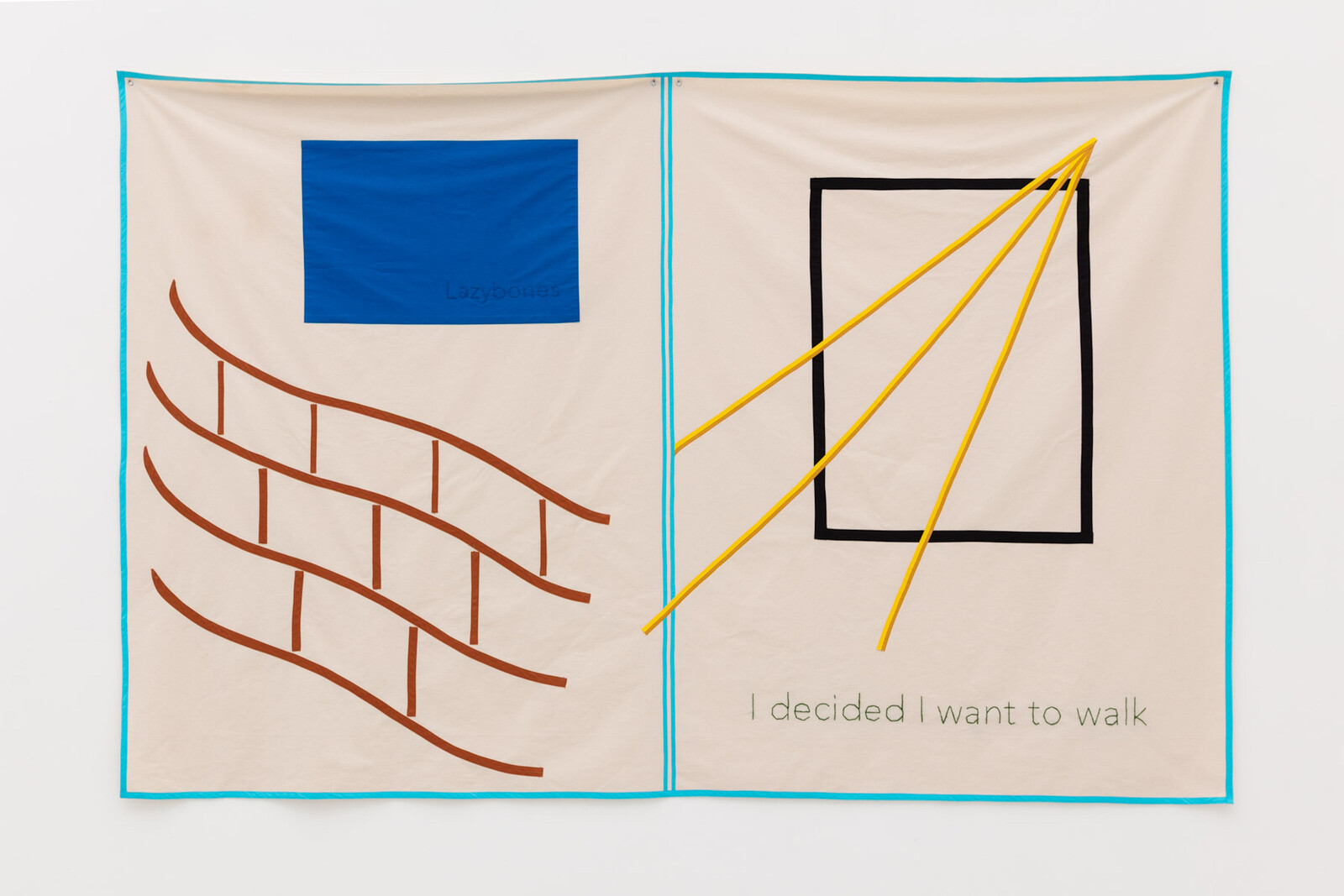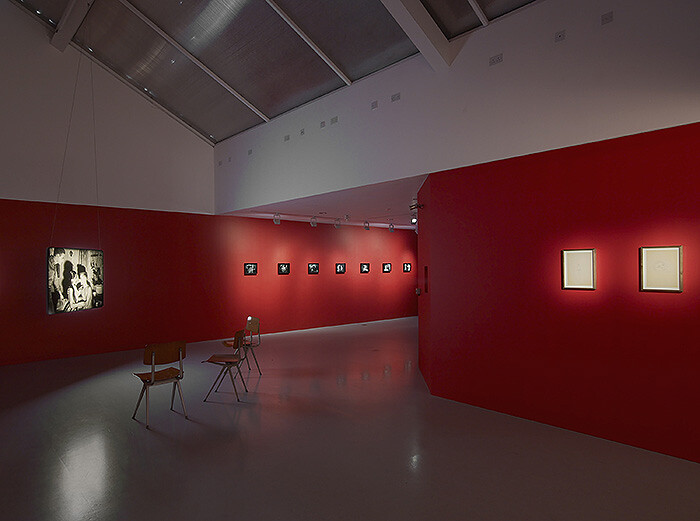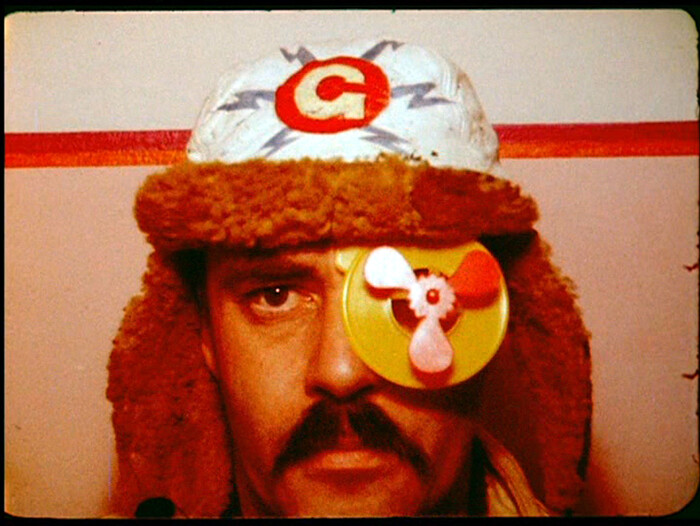Categories
Subjects
Authors
Artists
Venues
Locations
Calendar
Filter
Done
September 24, 2020 – Review
Helen Cammock’s “I Decided I Want to Walk”
Chloe Carroll

Helen Cammock’s 19-minute video They Call It Idlewild (all works 2020) presents, in no particular order, the static framing of: a brick wall, a statue, a frayed cobweb, grasses dipping in the breeze. The result of a pre-lockdown residency at Wysing Arts Centre, it’s the first piece encountered by visitors to “I Decided I Want to Walk,” the artist’s first solo exhibition at Kate MacGarry in London. The video’s imagery documents a space of retreat in rural Cambridgeshire, overlaid with a voiceover in which the artist ventriloquizes writers including Audre Lorde, Mary Oliver, and James Joyce.
Beyond the compact screening room at the exhibition’s entrance, two printed billboards (originally installed at a short-lived March exhibition at Wysing) line the walls of the light-filled main gallery, interspersed with a selection of new screenprints. Both series feature irregularly spaced white text against a monochrome background (crying/ is/ never/ enough; We/ Shared/ the/ Colour/ of/ Thought), and endeavor to rewrite the narrative of laziness, and to question its motives. Who is entitled to idleness? Who is expected to maintain productivity? For whom, in this moment, is idleness an applauded civic duty, and for whom is it a shirking of responsibility? Across the exhibition, …
October 3, 2014 – Review
Ben Rivers’s “Things”
Melissa Gronlund

The nouveau romanciers of France in the 1950s attempted to write a new sort of novel, as their name signaled: portraits of characters that would be comprised entirely of external effects, with none of the glimpses into interiority of the conventional novel—characters’ private thoughts and feelings—which the group argued were falsely given. How can I know what you are thinking, whether you sit across from me in reality or on the page? Writers such as Georges Perec and Alain Robbe-Grillet created characters through their possessions and attributes, and through what could be externally observed of them. The work of Ben Rivers, who, working almost exclusively in 16mm and Super 16 film over the past 10 years, has similarly focused on characters—he has referred to his films as “portraits”—with scant provision of commentary or an angle on how they should be seen. Narrative, voiceover, even reaction shots: these are all absent. What Rivers’s films provide instead are long shots of his subjects, who have mostly chosen to live differently—as hoarders or alone in the wilderness—so that a sense of them as people arises from their own actions and daily routine.
Rivers’s latest film, Things (2014), is particularly influenced by the nouveau roman, …
April 4, 2013 – Review
Jeff Keen
Filipa Ramos

There is a morbid fascination in observing cinema’s material world. That world which stands still, which is not affected by the transience of the moving image; which can be observed for the desired time and angle, and which steadily reveals itself upon our eyes. This possibility is the revenge of the fetishistic spectator, who desires to go beyond the threshold of the fleeting cinematic image, and see, touch, or even possess those things that appeared in it.
It can be awkward to have access to such concrete reality because the pleasure of watching films is often more related to the gaze of the ephemeral than with the extended observation of a fixed object. These ambiguous feelings cohabit at Kate MacGarry gallery, whose current exhibition presents a series of drawings, paintings, and objects related to the film works of Jeff Keen, a cult figure of British experimental cinema.
Keen (b. 1923), who passed away in 2012 after having made over seventy short films and videos, could well be considered a pioneer of the postmodernist imaginary. Keen’s films present an intricate (and often excruciating) babble of images, sounds, and gestures that are combined, distorted, and corrupted at a very accelerated speed—some of them being …
